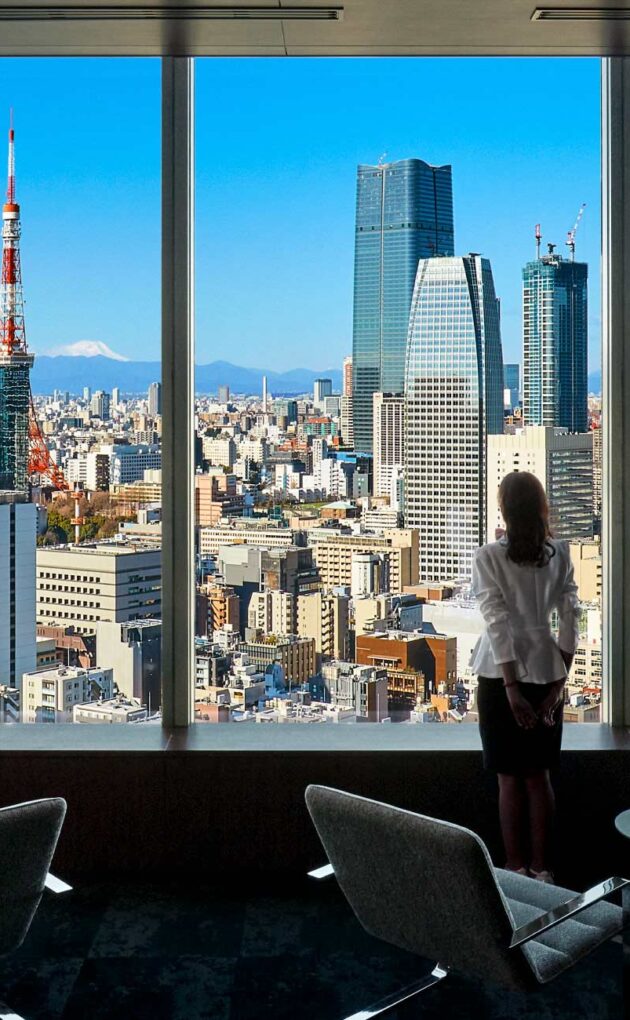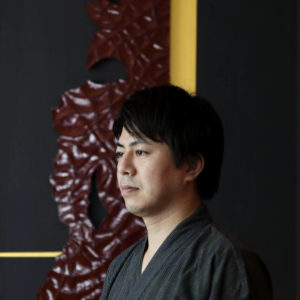Close


The 25th Artist Room on the theme of “Samurai”, which was started by artist Kenyu Mitsuhashi on July 1, 2016, continued the work for about a month while staying at the hotel and commuting to and from it, and completed it on August 1, 2016.
“By using Kamakura-bori (Kamakura carving), which the technique had been passed down from the age of the samurai, my aim was for the guests to think about the samurai, as well as Japanese aesthetics”, says artist Kenyu Mitsuhashi. The Artist Room Samurai was created with the desire to communicate this traditional skill to the world in a form that lives in the present. The Kamakura-bori, which has a history of 800 years, originated in Kamakura, a city deeply connected with the samurai. The entire room is decorated with Kamakura-bori, which utilizes uniquely Japanese traditional techniques for carving wood and applying layers of lacquer. This is the first of the artist rooms to be decorated using one of Japan’s beautiful traditional crafts.
Decorated on left and right sides of the wall above the bed are Kamakura-bori in the form of samurai. They consist of 32 parts, rather like a wooden mosaic. These are delicate sculptures featuring the beautiful gloss that results from carefully applied layers of lacquer. In between is a katana (sword) which is the work by Kenrei Mitsuhashi, Kenyu’s mentor. This katana expresses the spirit, technique, and physique of the samurai, which were passed down from master to disciple. Meanwhile, the tradition of the Kamakura-bori technique allows for an appreciation of Japan’s aesthetic sensibility. The wall on the opposite side is decorated with Kamakura-bori of kabutos (helmet) worn by actual famous samurai from the past (*). Painted in between kabutos is a circle, by the names of a famous katanas. A hanging scroll depicting a lion, in the position to carefully protect the whole room, and the Chinese phoenix pattern on the jin-baori (tabard), is painted reconstructing the design techniques of Kamakura-bori. The painting near the door depicts a jin-baori with a Mt. Fuji pattern (**).
At the Artist Room Samurai, guests staying will become samurai, experiencing the private space the samurai, beyond time and space.
* The red kabuto belonged to Yukimura Sanada, and the black kabuto to Ranmaru Mori.
** The jin-baori with Mt. Fuji pattern belonged to Hideyoshi Toyotomi.
Staff recommendation comment
What do you think of when you hear the word “Japan”?
Probably, many people think of Samurai. The image of Japan = SAMURAI is so widespread that some people overseas still believe that they still exist in Japan. Unfortunately, it is not possible to meet a Samurai in modern Japan, but in our Artist Room Samurai, you can experience the atmosphere as if you were a Samurai yourself. According to the artist, Mr. Mitsuhashi, the room was designed with the idea of “transcending time and space to experience the private space of a Samurai.” The room is lavishly decorated with motifs from traditional Japanese crafts such as hanging scrolls, haori (a traditional Japanese kimono), etc., to create a true Samurai atmosphere. However, it is not just decorated with things that evoke the image of a samurai: a Japanese sword is placed above the pillow and a haori is painted next to the bed. It is said that Samurai are alert even during sleep, protecting their dominant hand. It is believed that the reason for this was so that they could get up quickly and hold their sword. If a Samurai saw this room, he would be surprised to find how big and quiet it is and would be able to toss and turn as much he wants! When you stay in Artist Room Samurai, you can feel the energy and strength of Samurai, and experience their life from 130 years ago.
Room #3118 | Completion Date: August 2016
“The Samurai Room”
“Kamakura” is a sacred place for samurai, and is the place where Kamakura-bori (Kamakura Carving) started. This type of carving, an 800 year-old Japanese tradition, is chiseled in hardwood and repeatedly lacquered. I tried to express the “Samurai” spirit, which only craftsman can capture.
I wanted guests who stay in the “Samurai Room” to become samurai themselves, and experience the private world of the samurai by transcending time and space. In this room, there are some real samurai trinkets, such as Hideyoshi Toyotomi’s tabard, Nobushige Sanada’s warrior helmet, and Ranmaru Mori’s warrior helmet. In addition, a lion and phoenix painted according to a Kamakura-bori design look out from a vantage position where they can watch over the whole room.
The katana (sword), which is the soul of the samurai, was made by Kenrei Mitsuhashi who was Kenyu Mitsuhashi’s mentor. This is to remind you that the samurai spirit and technique is passed down from teacher to disciple; indeed, I think the master-pupil tradition is Japanese craftsmanship. Japanese craftsmanship has been passed down continuously by the confiding of secrets from father to son, just as I inherited my own craftsmanship from my ancestors who looked after it reverently for a long 800 years. I feel this is really what Japanese aesthetics is all about.
As you ponder on the samurai, through the craftsmanship of Kamakura-bori which we inherited from the time when samurai were all around us, I hope you will come to better appreciate the fine sense of Japanese aesthetics.
Kenyu Mitsuhashi

Born 1980 in Kamakura, as a descendant of Busshi (a sculptor of Buddhist images), a lineage which continues from the Kamakura Period.
From 2000, studied under his father, Kenrei Mitsuhashi. To hone the self-discipline and acquire the original intent of a Busshi, studied Zen at Kenchoji Temple, and in 2010, was bestowed the title “Kenyu” by the virtuous master Yoshida of Kenchoji Temple. Reproduces “Kamakura-bori in the form of tea utensils” created by ancestors, and also makes utensils for heads of tea ceremony schools such as Omotesenke. At the same time, introduces modern works of art centered around Buddhist artifacts and tea utensils to people all over the world.